Practice Insights > Lessons From Practice > Education
The Need for Intercultural Education in India: Lessons from QUEST, Maharashtra
By: V Santhakumar, Rema Devi
1. Introduction
As part of this Practice Connect Initiative, we have documented the challenges faced in the education of the Scheduled Tribes (STs) in different parts of Odisha (North and South). We have also compared this situation with that of the education of the indigenous groups in Brazil. In Odisha, the language of most of the STs is markedly different from that of the mainstream society. Hence, the state government has started a mother-tongue based education for children from the tribal communities; and the challenges in this regard have been described in the document mentioned earlier. However, the challenges encountered in the education of the STs are not the same in other parts of the country. In Mizoram, where they form the majority, the educational achievements are relatively better than those of the country as a whole.
It is in this context, that we look at the situation of the STs in Western Maharashtra. A majority of the tribes in this region speak languages derived from the Indo-Aryan groups (while those in Odisha use those that have their roots in the Dravidian or the Australoid groups), which are not too different from that of the mainstream/dominant societies there. It may be noted that the tribal population in Western Maharashtra (formerly, Thane district) was involved in a long-period struggle for ownership of land and to reduce other kinds of exploitation1. Moreover, Maharashtra, in general, has witnessed a series of efforts by non-governmental organizations (NGOs) to improve the educational status of marginalized groups, such as Dalits, STs and girls. These efforts and also the relative closeness to Mumbai city could have enhanced the interaction of the STs with other communities because of which their educational challenges may be different from those faced by the tribes in say, Odisha.
It is in this context that we have looked at the educational initiatives of NGO, QUEST, headquartered in Sonale near Wada, Western Maharashtra.
2. Key activities of QUEST
Quality Education Support Trust (QUEST) works towards enabling quality education of tribal and underprivileged children in different parts of Maharashtra. Started in 2007 by a group of nine like-minded people in Wada, Palgar district, and steered by Nilesh Nimkar, who has nearly 20 years of experience in the field of education of tribal children, it has its presence in 26 districts of Maharashtra. Details of the history and programs of QUEST is available on its website.
The organization works closely with the tribal welfare department of the Government of Maharashtra as the latter is interested in scaling up the programs designed and piloted by it. The emphasis is on literacy and numeracy. Nilesh was earlier with the NGO, Grammangal, in-charge of running alternative schools for children from tribal groups. He, along with some others, founded QUEST as they realized the need to go beyond the strategy of running a few schools and of working with the public education system. Over the years, they have carried out a number of activities to improve the quality of education at different levels. We discuss briefly some of these activities here.
2.1 Improving the quality of Early Childhood Education
QUEST has designed and carried out a program called, ‘Palavee’ to strengthen Early Childhood Education (ECE) in Anganwadis (Government of India’s Integrated Child Development Centres). The organization has selected two-three Anganwadis in every `beat’ to be developed as a model. The supervisors and Anganwadi Workers (AWs) of these selected Aganwadis are trained to use an innovative approach towards ECE. A two-day training is organized every three months and each participant has to attend six such trainings, making twelve days of input in a period of one and a half years. QUEST has developed a training package called the ‘six-stage program’ for this purpose. The AWs are trained in implementing the ECE program that has a strong component of the emergent literacy approach. They are also given onsite support by QUEST’s trained staff in the transaction of ECE. In the year two of the program, the trained team of supervisors and AWs from the ‘model Anganwadis’ universalize the program in their respective beats.
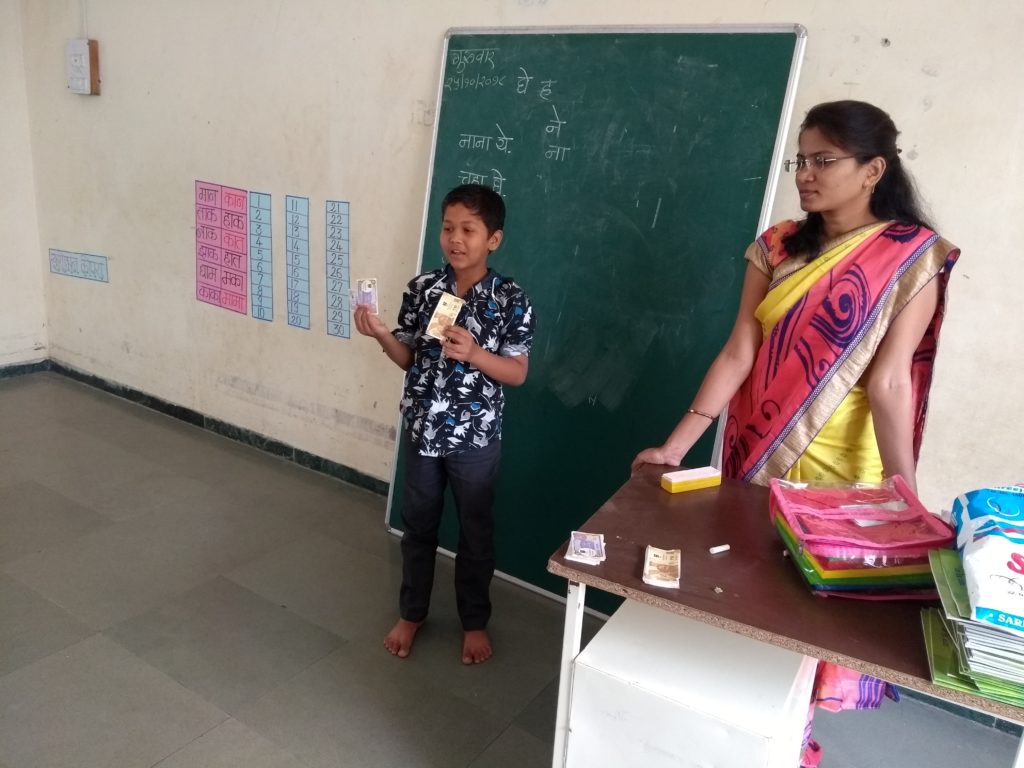
We observed the classroom interactions in one such model Anganwadi. In general, these pre-primary education centres have relatively better infrastructure. The day starts with the prayer followed by play-time, children can play with the toys, board games and activity material available at the centre. These are designed to improve their cognitive and motor skills. The kids are encouraged to keep the play material and toys back in their places at the end of the play-time. Various activities to give them a sense of the environment around, like the day’s weather, date, month and year, follow. They are also encouraged to mark their own attendance. Overall, our impression is that the training helps the AWs to cover a substantial part of the ECE.
The organization also monitors the progress of children who have participated in this program. Its research has shown that those who have gone through the program (in which it has adapted some of the globally known practices to suit the local context) continue to perform better than other students in primary grades (with a widening gap between these two sets of students, over time). According to the AWs and field-level staff of QUEST whom we met, the noticeable benefits of the intervention have led to a reverse process by which sections of the middle-class parents in a semi-urban area, who have been enrolling their children in private kindergartens, have shifted their wards to these Anganwadis. The community participation has also increased at least in the urban centres, where the mothers of the children have started to stay in the Anganwadis along with the children, participating in the activities and supporting the AW. This points to the increased acceptance of trained AWs in the community.
2.2 Intervention in primary schooling
QUEST uses a balanced approach to improve the learning of students in primary grades. The purpose is to overcome the situation where several children lack basic literacy and numeracy even after three to four years of schooling. For this purpose, it has established Balbhavans either independently or in partnership with government schools (residential and non-residential). These Balbhavans serve as demonstration sites for its teacher education program and help validate and fine-tune its pedagogic approach. The teaching in the Balbhavans is carried out by fellows with D Ed or B Ed, who are hired and trained by QUEST. These fellows visit homes in the mornings and evenings to encourage parents to send children to Balbhavans. All students in the primary grades in the school spend a specified time period in the Balbhavans. Most of the Balbhavans are in the Ashram Salas (residential schools) for tribal children. The teaching in the Balbhavans is level-based and not grade-based. These learning centres are made colourful and academically focused with charts, pictures, books and craft items. Clean and ventilated classrooms provide a positive environment for learning. The students are divided into groups according to their learning level and each group is assisted in learning language and mathematics through activities. QUEST has prepared context-specific learning material for this purpose. It has developed eight books and some story cards in synchronization with the state syllabus, so, by the time the students assimilate the material in these books and cards, they will be capable of dealing with the mainstream primary school syllabus. However, these materials provide only a framework to the teachers and they need to constantly adapt these to suit the local situation. Hence, the pedagogy used in the specific context is more important. Apart from its own materials, QUEST uses well-known children’s literature in its early literacy program.
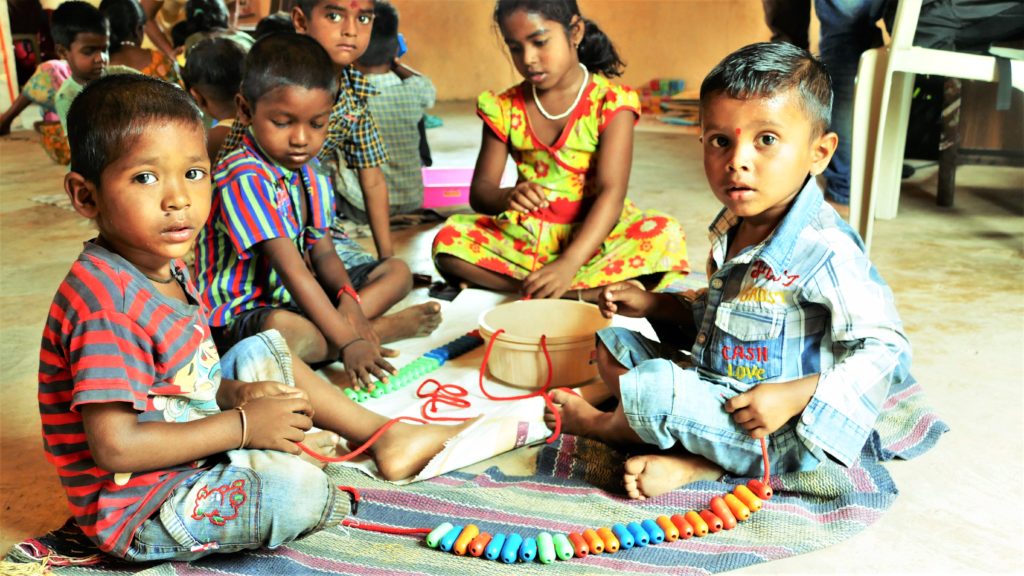
We visited a Balbhavan which caters to the students of a regular government school. The children come to the Balbhavan before and after school. There is another government day-school in the town of Wada, where the Balbhavan functions as part of the school. Here children from each grade attend Balbhavan for a specific period during school hours. We have also seen Balbhavans operating in Ashram Salas. QUEST is aware that this initiative cannot be scaled up easily (as it is resource-intensive). However, it enables the organization to get acquainted with the realities and opportunities in tribal education and to build a model while supporting students in coping with the mainstream syllabus. This, according to Nilesh, requires a strong foundation and emphasis on conceptual clarity.
This program attempts better approaches to imparting quality schooling in government schools which face a number of constraints. The teachers acknowledged the usefulness of this program as students perform better after going through the intervention. The teachers in a residential school where a Balbhavan operates told us that it is difficult for them to follow the approaches used in the Balbhavan due to the big class size2. For the teachers in another school, the benefit of the Balbhavan was because it made available an additional teacher (there are only two teachers). These teachers note that such an intervention can bridge the gap of parental support in lower classes.
We could also see a well-motivated regular teacher following the practices used by QUEST even though the organisation is not functioning in her school now. The Balbhavan initiative clearly influences the quality of teaching in government schools positively. Although, Nilesh points out that this type of lateral influence is completely person dependent and only a top-down approach would create a greater impact. Some students who have been through the Balbhavan experience, have completed schooling and higher education and have joined the organization as fellows to support the next generation.
2.3 Activities in post-primary grades
There is a similar intervention aimed at students in post-primary (middle and high-school) grades and it is called, ‘Saksham’. This program identifies children who lack grade-specific skills in terms of literacy and numeracy. In most schools where QUEST operates, almost all children fall under this category. They are provided additional inputs based on their needs in an accelerated manner. Though the total intervention is designed for 18 months, all children may not require level-based3 coaching for such a long period. There is also monitoring of the progress of students who go through the program. Based on the research carried out by QUEST there is a significant improvement in the learning achievement of the students. The teachers are also trained to implement such a program on their own and their use of these practices is observed by the QUEST staff.
2.4 Teaching literacy by following a balanced approach
In addition, QUEST is trying out some of the emergent approaches for literacy instruction for children in the Marathi-medium schools, and this is called, ‘Lipi’. It has developed a 16-unit program for literacy instruction for children in grades I to III. QUEST follows the ‘balanced approach’, which is a combination of the conventional method of teaching reading through phonics and the whole-language approach. They note that Indian scholars adopt or follow the learning/teaching methods/aids which are proven effective in the West without considering the local context. Hence, QUEST is trying to develop literacy approaches which are appropriate to the Indian context.
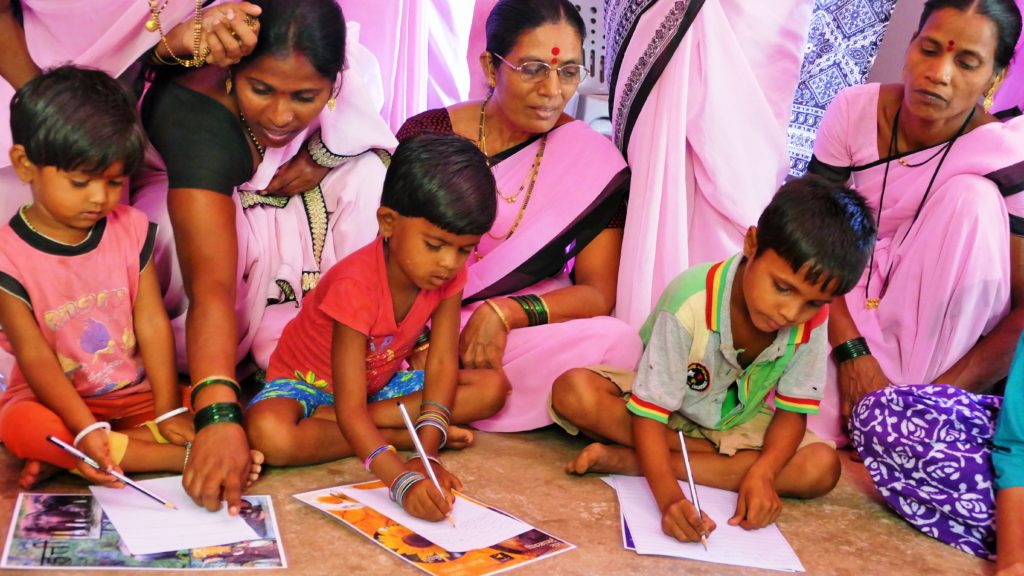
QUEST has also prepared a sizable volume of learning materials in the local language (and in certain cases, the same material in Marathi and a tribal language), which can be used by children and teachers. These also include videos for teachers and teacher-educators. We also saw the organization’s systems to monitor the progress and impact of all their activities, and; to use the data/information to check their effectiveness.
Despite the lack of any corpus fund, the organisation could attract funding for their specific activities from multiple donors – foundations, CSR of organizations, and individuals. According to Nilesh, they get expressions of interest from their potential funders. The organisation has kept its size small for a very long time but there has been an increasing pressure to scale up the programs and this would mean that it cannot remain reactive to funding offers and may have to proactively seek resources. Most of their interventions are designed in terms of modules (say, per-school or per-child) and this also facilitates funding by relatively small donors, like individuals. Government organizations, such as the Social Justice and Education Departments (which run residential schools for children belonging to the STs), have noted the practices of QUEST and have taken its help to scale up these practices in more schools in different districts of Maharashtra. In these efforts, the role of QUEST is to train groups of master-trainers (who are teachers of government schools) and who roll out these programs in other schools with minimal on-site support from its own staff.
3. The Realities of tribal communities and their education
Since the languages of most of the tribal groups in this part of Western Maharashtra are based on the Indo-Aryan language family, their languages are not structurally very different from the mainstream languages of the region, like Marathi or Hindi. Though different tribal groups have their own languages, they can understand Marathi. There is also a non-tribal population in this area, and they can understand words from the tribal languages. These tribal people cultivate paddy and landlessness is not a major issue here. This could be due to the social movements against their exploitation that have taken place in the past. Their dependence on forests is not very high. There is seasonal migration to cities and also to other places in the region which affects the education of their children. Though the fertility rate has come down, it is common for young women to have four to five children. Though parents are willing to send their children to schools, their own involvement in academic activities continues to be minimum. They recognize their responsibility but their social and economic conditions do not allow them to take greater responsibility than they are taking right now towards the education of their kids.
3.1 The Need to contextualize education
The need for cash among these tribal communities is exploited by the money lenders who charge interest rates as high as 120%. These people take loans from moneylenders as the latter are easily approachable and their procedures, when compared with banks, are also simpler. For these reasons, the borrowers may overlook the high-interest rates. The barter system is another form of exploitation that exists here, as the conversion rates used in the exchange of products may not always reflect their market value. These realities can be brought to the classrooms and included in the curriculum and pedagogy. QUEST has been trying to address these issues at a small level where children take up a problem from their surroundings and try to come up with a solution through systematic study within their capacity.
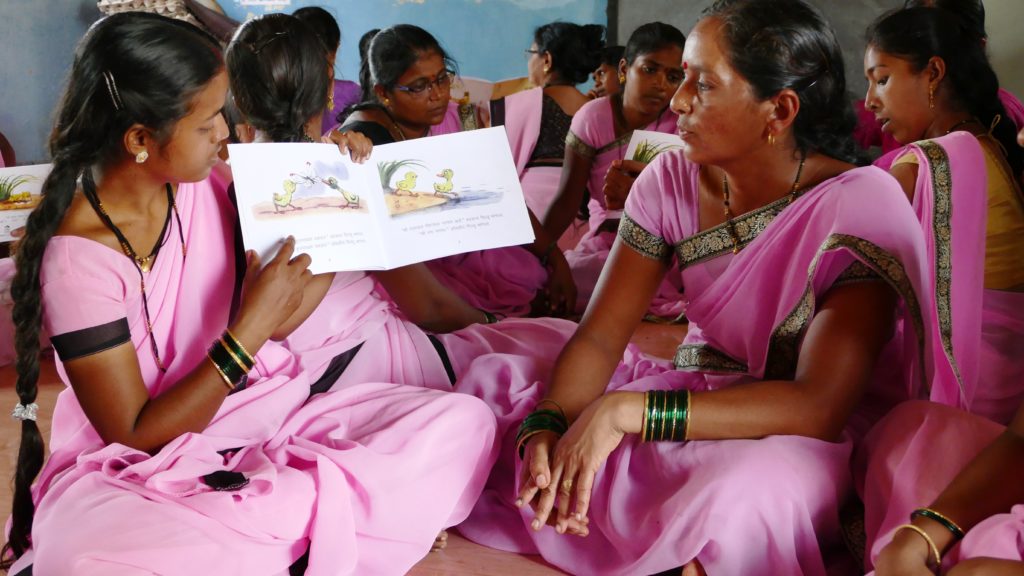
The children lag behind in learning because of their poor reading competency. Reading is a process of constructing knowledge in a particular context with prior knowledge but this prior knowledge, keeping in mind the tribal children, has been ignored in the curriculum. Hence, according to Nilesh, a mix and match of content and language become necessary for desired learning outcomes.
3.2 Preference for residential schools (Ashram Shalas)
Despite the opposition to residential schools for tribal children or the indigenous people in different parts of the world and among activists, the reality is that there is a huge demand for Ashram Shalas in Western Maharashtra. For this reason, the government is also setting up a large number of such schools either directly or by providing grants to private institutions. There is no scarcity of students in these schools and teachers talk about a pupil-teacher ratio of around 60:1 here. A number of people whom we met note that parents are interested in keeping their children in the Ashram Shalas, since these schools provide not only education but also food and other facilities. We may see this as an outcome of two phenomenon – first, there may be an objective reality of these households and the aspiration of parents related to their children; secondly, they may not see a residential education and the consequent alienation of their children, if any, from their traditions/culture as a serious challenge. Both these are related to the socio-economic conditions of these people. We have seen young kids (aged five to six years) in these residential schools, and apparently, they cope up reasonably well in this situation, staying away from home and parents, after an initial period of discomfort and home-sickness. The presence of older children – some of them from the same household or village – in these schools and their care comforts and helps these younger kids adjust in the Ashram Shalas. Based on the limited number of schools that we visited, our impression is that these schools have the basic facilities though there is a need to improve the infrastructure and level of hygiene. (It is also true that students who come from poor and marginalized households may not see these limitations as serious.) Hence, Ashram Shalas accommodate a significant number of children from the STs in this part of the country. While acknowledging the criticism associated with these schools and recognizing that these may not serve as the best way to enable quality education to tribal children, certain positive impacts of these schools are notable too. These do create an environment for mutual support and foster an attitude of caring and bonding among the children. This is sure to have a positive impact on their self-dependency and decision-making abilities.
However, there is a reduced number of working days in the Ashram Shalas as students are sent back to their homes when there are delays in getting food and provisions. Also, there is a mismatch between the school calendar and the tribal calendar. Tribal festivals and harvest seasons differ from that of the school vacations and children miss school to attend these festivals and to support their families during harvest time. This is a major cause for low attendance in schools. But these need not be viewed as concerns specific to tribal children as children from poor households are likely to be irregular in attending school and may not perform well.
3.3 Short-term hand-holding by QUEST
However, how regular teachers respond to the initiatives of QUEST is an interesting issue. In places where these interventions take place within the school, we could generally see a cordial relationship between the staff of QUEST and the regular teachers. However, how far these additional interventions influence the practice of regular teachers is an issue, which we discuss in the next section. Regular teachers can be indifferent or uncooperative to the interventions by an external organization. These additional interventions by organizations such as QUEST are of short-term nature and the desirable scenario would be one where the regular teachers assimilate these practices into their regular work quickly. In the absence of this, these interventions may have to continue or the learning achievements of children may decline. Most government schools also face the same problems that are encountered by these schools – the lack of resources to carry out such additional interventions. Hence, there is a need to think about strategies to ensure that these interventions do not remain additional but become part of the regular teaching process.
3.4 Teachers’ response to QUEST’s initiatives
We have noted that QUEST attempts to build the capacity of teachers in following its innovative practices in other government schools where QUEST does not engage its own staff. Even in the schools where it provides additional support, the expectation is that the regular teachers will adopt and use these practices on their own. To what extent, this is happening is a question that requires further examination. In most of the schools that we visited where QUEST is running its program, its own staff continues to play an important role. Even in the case of an Anganwadi where the AW’s training was over, we could see the staff of QUEST taking an active role. Only in one case, we observed the regular teacher carrying out the practices on her own without the support of the QUEST staff. This could be due to the limited time of our visit. However, we feel that the expectation that regular teachers in government schools would follow innovative practice as an outcome of the intervention (including training) of an external organization needs a more serious analysis. This is not to say that there will not be any takers for such new practices. Some may adopt and some may not. Those who do not may find excuses for it. There are also some underlying factors that influence this positive or negative response of teachers. QUEST has a set of schedules to record the observation of its staff regarding the practice of teachers who have received its training. However, they have not analysed these schedules in detail. It may be better to analyse these to generate insights on who adopt (and who do not) and the possible factors that have enabled the positive outcome.
3.5 Learning materials in tribal languages
A number of organizations have produced learning materials (in primary schooling) which are either part of the core curriculum or additional readings in different tribal languages. These are prepared and published not only by NGOs such as QUEST but also by the government’s tribal development departments. There was an opposition to the education of tribal children in their own language by their community leaders, as evident from their response to the publication of learning materials in the tribal language in 1998 in Maharashtra.
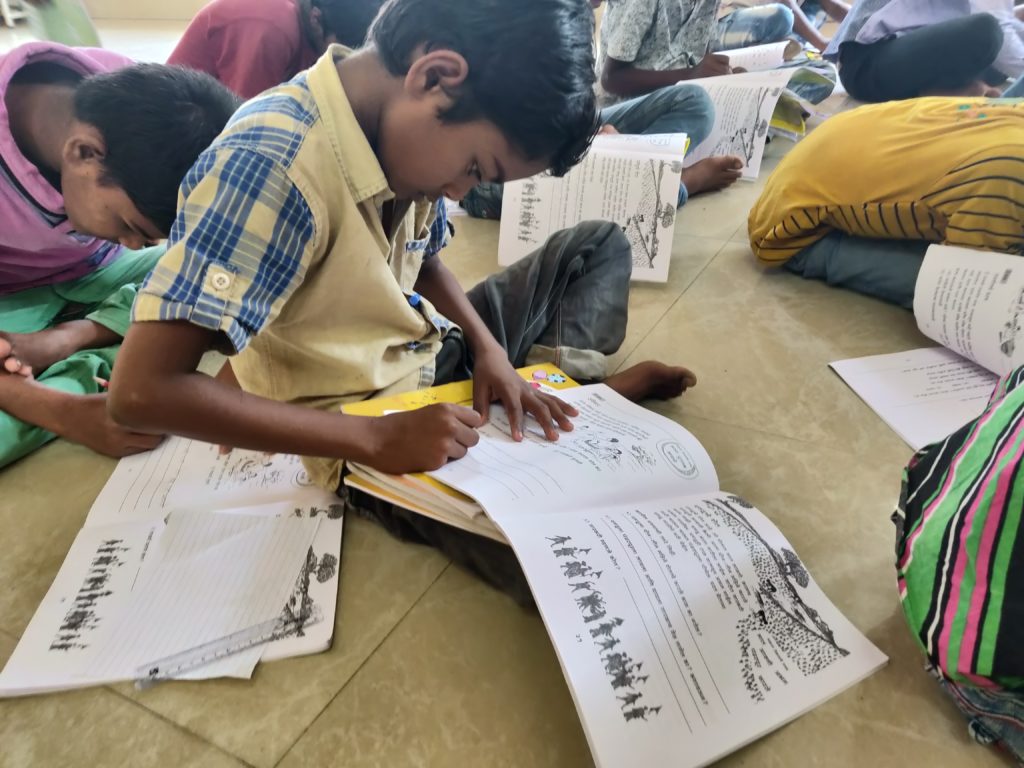
Two early efforts in the development of primers – ‘Adibharati’ in Marathi and ‘Soliga Siddhi’4 in Karnataka – were rejected by these tribes, as they felt that these attempts would reinforce their exclusion from the mainstream society. However, according to Nilesh, there is no proper assessment of the actual use of the materials available in tribal languages. This assessment of how these are actually used, who uses these and to what end, are some of the questions that require answers before making further efforts towards the development of learning materials in tribal languages.
3.6 Is it a general issue of quality education?
One question that comes to our mind after visiting the schools and observing the activities of QUEST is whether there is any difference between tribal and non-tribal children in terms of learning achievements. Of course, some of the schools that we have visited are Ashram Shalas with only children from the STs but our impression is that the response of the children in these schools to classroom instruction is not different from that in any typical government school in India. In schools where children from both these social groups were attending, it has not been easy to differentiate them. The studies of QUEST have also not differentiated children from these two groups (even though some of the studies are carried out in those schools where only tribal children study.) Moreover, some of the innovative practices developed by QUEST are also used in the residential schools of children from the Scheduled Castes (run by the Department of Social Justice). QUEST does not experience much difference between the learning capacities of tribal and non-tribal children, except in North-central Maharashtra where the linguistic difference between these two groups is considerable5. The issue of ‘achievement’ is related to the measure used for this purpose. If culturally appropriate measurements are used, there may not be much difference between tribal and non-tribal students in terms of achievement. There are also differences in the socio-economic circumstances of tribal children (limited surplus from cultivation; lack of stability due to migration, and so on) that may create differences in achievements. This is noted by a local teacher who has taken pro-active steps to enhance the learning of students. Though there are these differences between tribal and non-tribal children in terms of learning achievements, our impression is that these are narrower than say, in parts of Odisha. Hence, we felt that most of the interventions by QUEST to improve the quality of schooling are relevant for children from all backgrounds who study in government schools in India.
Key lessons
4.1 The Need for bilingual education
The education of children from the STs in this area poses a slightly different challenge in terms of language from that in Odisha. This is so since the languages (like Pavri) of tribal groups in this part are not very different from Marathi, and also because of the fact that tribal children and their parents understand Marathi. Because of their frequent interactions, the mainstream society also understands certain words of the tribal languages.
However, there is a need to bridge the language gap that exists between the language of the tribal students and the mainstream education (Marathi in this case). But it may not require a mother-tongue medium education for all students from the tribal groups. In fact, there is opposition to the use of learning materials in tribal language by some tribal leaders. They feel that by getting an education in their own mother-tongue they are going to be deprived in the long-run. It may be possible to have bilingual education to include both the tribal language and Marathi. This may require learning materials, especially in primary grades in both these languages, which may help students to relate the content to their own context. According to Nilesh, what is needed along with the material is bilingual or trance language instructions which will help the classroom practices immensely.
Since some teachers may not know the tribal language used by the children, it may be necessary to provide them with short-term training, which would not only provide exposure to the language but also encourage the teachers to respect the differences in terms of language. The teachers also need to be sensitized to neither maintain nor indicate that the tribal language is in any way inferior. Therefore, the myths and misconceptions among teachers regarding the tribal languages, like, the tribal languages are inconsequential or, there is no grammar in these, should be addressed first. According to Nilesh, this can be easily achieved and a six-month training is sufficient for teachers to pick up the language.
4.2 The Need for intercultural education
The bilingual education that is mentioned here can be part of an intercultural education. International organizations endorse an intercultural education in the context of the challenges encountered by social groups, such as the indigenous people. It is more appropriate than pursuing an education merely in the medium of the tribal/indigenous groups or one that is multi-lingual in content. In that sense, intercultural education should be used not only for the marginalized groups, such as the indigenous people but also for the mainstream society. There is an intrinsic need for marginalized groups to interact with mainstream society and the latter also needs an intercultural education to know, understand and respect the language and culture of the former. Though India may yet take a long time to accept and operationalize a truly intercultural education, a bilingual education (not only for their children but for all) in the areas where tribal people live and the capacity development of school teachers in this regard – whether they belong to tribal or non-tribal groups – would be an important first step in this direction.
4.3 The Need for teachers from mainstream community
Based on the experience of QUEST, an ideal scenario would be where there is a combination of teachers both from the tribal and the non-tribal communities in these schools. It will facilitate the inter-cultural education mentioned in the previous section. The capacity of both these sets of teachers has to be enhanced so that they can provide culturally-appropriate, quality schooling for children from the tribal communities. A well-designed induction training can serve this purpose.
5. An Appropriate education for tribal children
Our experience in Western Maharashtra and elsewhere in India and abroad encourages us to think about the role and appropriate nature of education for the tribal communities and the indigenous people. First, there is a high degree of diversity among these groups in terms of the characteristics (ethnicity, language) and between them and the dominant group surrounding them. These groups have also undergone different trajectories of social change historically and that creates diversity in terms of their current socio-economic conditions. Then, there are differences in terms of the internal social and political mobilization within these social groups. The design of an appropriate education should take into account these contextual differences.

The debate around mainstream education versus the loss of tribal culture needs attention. In reality, the tribal children are getting more and more exposed to the outside society and hence, preparing the present generation to deal and cope with the changes around it is the need of the hour. The questions regarding whether the tribal people want to preserve their culture or not and in what forms, may have to be left to these communities to decide. Even among the mainstream community, there could be a demand for and tendency to preserve cultural norms even after two centuries of British rule, like the intra-caste marriage, (though all these norms are not desirable for everyone within the society). Hence, it may be incorrect to presume that the tribal population may lose its identity and culture through education. According to Nilesh, it may not be desirable to advocate for a separate curriculum for tribal children. Instead, teaching should be localised to achieve the objectives of the present curriculum. Most importantly, the emphasis should be on creating a conducive environment for them to learn.
AUTHORS
V. Santhakumar, Professor, Azim Premji University
Rema Devi has been associated with the Field Practice team of the Azim Premji University. She supports coordination between practice organizations and the Practice Connect team. She has worked with various civil society organizations across India on various aspects of social development.

